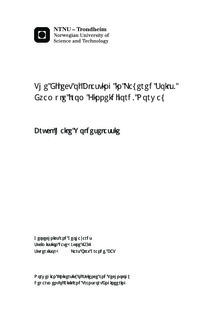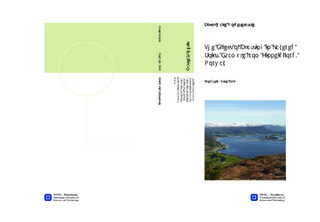| dc.contributor.advisor | Grande, Lars Olav | nb_NO |
| dc.contributor.author | Woldeselassie, Bruck Haile | nb_NO |
| dc.date.accessioned | 2014-12-19T11:28:30Z | |
| dc.date.available | 2014-12-19T11:28:30Z | |
| dc.date.created | 2012-11-08 | nb_NO |
| dc.date.issued | 2012 | nb_NO |
| dc.identifier | 565987 | nb_NO |
| dc.identifier | ntnudaim:8266 | nb_NO |
| dc.identifier.uri | http://hdl.handle.net/11250/232078 | |
| dc.description.abstract | A case study on the role of blast vibration on the 1996 Finneidfjord landslide was carried out. This catastrophic landslide which claimed four lives has been under investigation during the past decade. The study area has been developed as natural laboratory and different field and lab investigation have been carried out in the process of understanding the event bed. The mechanically weak layer that the landslide used as a slip surface is found 2.8-3.1m below the sea bed and is composed of loose sand layer sandwiched between two very low permeable clay layers. The main focus herein is the effect that the vibration had on the sand layer and see if the energy from it was able to generate an excess pore water pressure or even liquefaction.Literature review on different models for calculating energy from vibration and liquefaction susceptibility is done. The energy calculation models require inputs that involve laboratory test therefore they are to be referred for the future work. As for the liquefaction susceptibility; data from the field and laboratory investigation are utilized and are used for the simple liquefaction susceptibility analysis.Utilizing a FEM software QUAKE/W, part of the GeoStudio software suite, the amount of excess pore water pressure generated due to the dynamic loading from the blast is analyzed. Keeping the parameters of the other materials in the model constant and changing the damping ratio of the sand layer ranging from 1% to 33%, and by changing the geometry of the model an excess PWP in the range of 0.4KPa to 6KPa is obtained. As for the liquefaction susceptibility analysis using the cyclic stress ratio, a factor of safety of 2.3 was obtained leading to the conclusion that liquefaction was not the cause of the landslide. With the excess PWP obtained from the dynamic analysis plus a reading from a piezometer installed close to the slide scar, slope stability analysis is done with a software tool called SLOPE/W which again is part of the GeoStudio software suite. The initial stability condition of the slope, only considering the excess PWP from the piezometer reading, was on the verge of failure. The analysis carried out, considering the result from the dynamic analysis, gave a factor of safety less than one. Based on the results one might conclude that the excess PWP caused the landslide but given the fact that some very important parameters which should be obtained from a lab investigation are lacking, the study can only show that there is a possibility for generation of an excess PWP and for a slope already on the verge of failure, reduction in the effective stress caused by the excess PWP could lead an incidence like in Finneidfjord. Future work for improving the study and some recommendations that could help in dissipating excess pore pressure in such a condition are also forwarded. | nb_NO |
| dc.language | eng | nb_NO |
| dc.publisher | Institutt for bygg, anlegg og transport | nb_NO |
| dc.subject | ntnudaim:8266 | no_NO |
| dc.subject | MSGEOTECH Geotechnics and Geohazards | no_NO |
| dc.title | The Effect of Blasting in Layered Soils, Example from Finneidfjord, Norway | nb_NO |
| dc.type | Master thesis | nb_NO |
| dc.source.pagenumber | 114 | nb_NO |
| dc.contributor.department | Norges teknisk-naturvitenskapelige universitet, Fakultet for ingeniørvitenskap og teknologi, Institutt for bygg, anlegg og transport | nb_NO |

